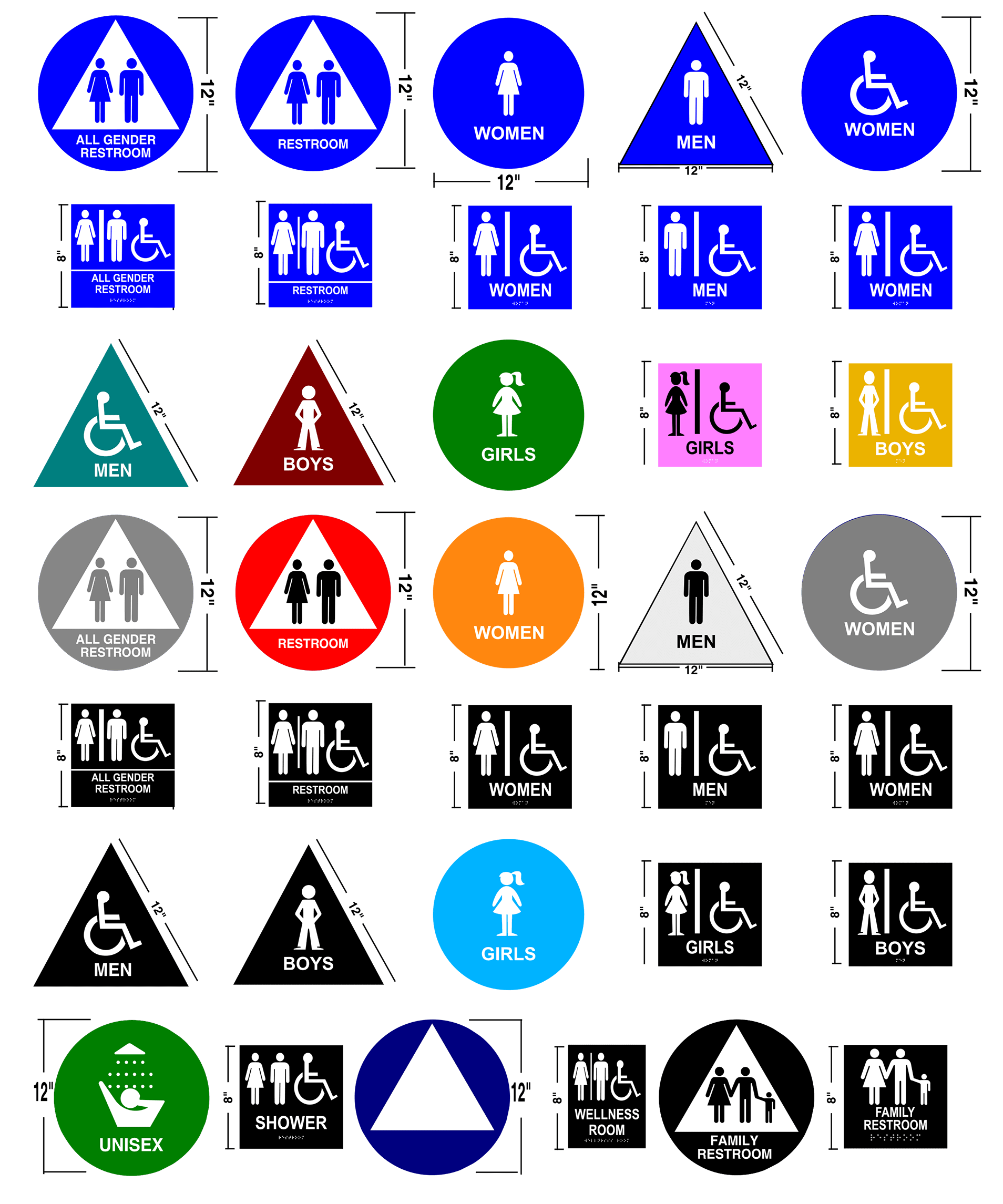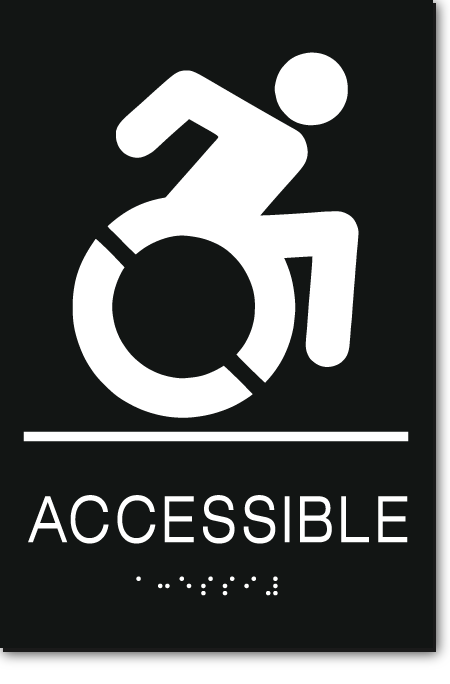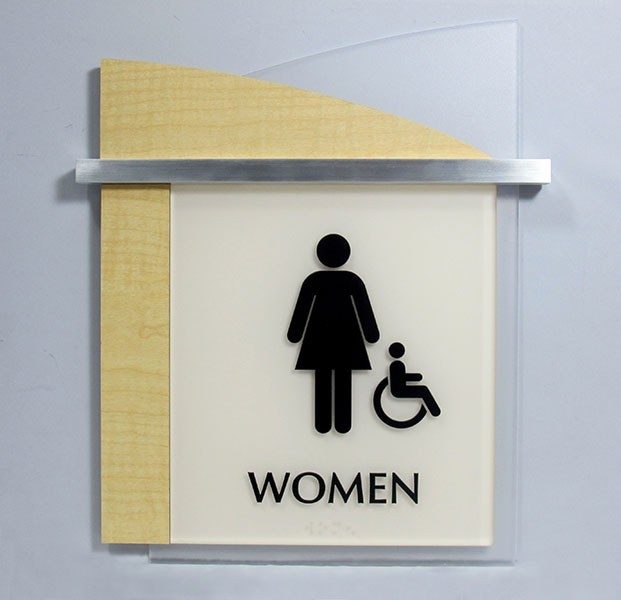ADA Signs: Important Tools for Inclusive Environments
Exploring the Trick Attributes of ADA Signs for Boosted Ease Of Access
In the realm of availability, ADA signs offer as quiet yet powerful allies, guaranteeing that areas are comprehensive and navigable for individuals with disabilities. By incorporating Braille and tactile elements, these signs damage obstacles for the aesthetically damaged, while high-contrast shade schemes and understandable fonts accommodate diverse visual requirements. Their tactical positioning is not approximate yet instead a computed initiative to promote smooth navigating. Yet, past these functions exists a deeper narrative concerning the evolution of inclusivity and the continuous commitment to creating fair rooms. What more could these indicators symbolize in our quest of universal access?
Relevance of ADA Conformity
Making sure compliance with the Americans with Disabilities Act (ADA) is crucial for cultivating inclusivity and equal access in public areas and offices. The ADA, enacted in 1990, mandates that all public facilities, employers, and transport solutions accommodate individuals with disabilities, ensuring they appreciate the very same civil liberties and opportunities as others. Compliance with ADA criteria not just meets legal commitments but likewise enhances a company's online reputation by demonstrating its dedication to diversity and inclusivity.
One of the key aspects of ADA compliance is the application of obtainable signage. ADA indications are made to guarantee that people with impairments can conveniently browse via rooms and structures.
In addition, adhering to ADA policies can reduce the threat of potential penalties and lawful repercussions. Organizations that fail to adhere to ADA standards might face legal actions or penalties, which can be both damaging and monetarily difficult to their public picture. Thus, ADA conformity is indispensable to cultivating an equitable environment for everyone.
Braille and Tactile Components
The consolidation of Braille and tactile components into ADA signs personifies the principles of ease of access and inclusivity. It is usually placed underneath the equivalent text on signage to ensure that people can access the details without aesthetic aid.
Responsive elements extend past Braille and consist of increased personalities and signs. These components are made to be noticeable by touch, enabling people to determine space numbers, restrooms, exits, and various other essential areas. The ADA sets certain guidelines regarding the size, spacing, and positioning of these tactile aspects to enhance readability and make certain uniformity throughout different environments.

High-Contrast Color Pattern
High-contrast color design play a critical function in improving the visibility and readability of ADA signage for people with visual disabilities. These plans are important as they maximize the distinction in light reflectance between text and background, making certain that indications are easily noticeable, also from a range. The Americans with Disabilities Act (ADA) mandates making use of specific color contrasts to suit those with restricted vision, making it a crucial facet of conformity.
The efficiency of high-contrast shades depends on their ability to attract attention in different lights problems, consisting of poorly lit atmospheres and locations with glow. Usually, dark text on a light history or read this post here light text on a dark background is used to achieve ideal comparison. For example, black message on a yellow or white background supplies a raw visual distinction that assists in quick recognition and comprehension.

Legible Fonts and Text Size
When thinking about the design of ADA signs, the selection of clear typefaces and ideal text size can not be overstated. These elements are vital for making certain that signs are easily accessible to people with aesthetic disabilities. The Americans with Disabilities Act (ADA) mandates that font styles need to be sans-serif and not italic, oblique, manuscript, very attractive, or of uncommon kind. These demands help make sure that the text is quickly readable from a distance which the personalities are distinguishable to varied target markets.
According to ADA guidelines, the minimum text elevation ought to be 5/8 inch, and it ought to raise proportionally with seeing range. Uniformity in text size contributes to a cohesive aesthetic experience, assisting people in navigating environments efficiently.
Additionally, spacing between letters and lines is essential to clarity. Appropriate spacing avoids personalities from showing up crowded, enhancing readability. By adhering to these requirements, designers can considerably improve access, making certain that signs offers its designated objective for all individuals, despite their aesthetic capacities.
Effective Placement Approaches
Strategic placement of ADA signage is necessary for making best use of access and ensuring conformity with legal standards. ADA standards stipulate that indicators ought to be mounted at a height between 48 to 60 inches from the ground to guarantee they are within the line of view for both standing and seated people.
Furthermore, signs should be placed nearby to the latch side of doors to permit simple recognition prior to entrance. Consistency in sign placement throughout a center improves predictability, reducing complication and enhancing general customer experience.

Conclusion
ADA indications play an essential function in advertising access by integrating features that deal with the requirements of people with impairments. These aspects collectively cultivate an inclusive atmosphere, underscoring the importance of ADA conformity in making certain equivalent gain access to for all.
In the realm of access, ADA indications serve as quiet yet powerful allies, ensuring that rooms are inclusive and navigable for individuals with disabilities. The ADA, passed straight from the source in 1990, mandates that all public centers, employers, and transportation solutions fit people with specials needs, guaranteeing they appreciate the very same rights and opportunities as others. ADA Signs. ADA signs are developed to make sure that people with handicaps can conveniently browse with spaces and buildings. ADA guidelines state that indicators ought to be placed at an elevation between 48 to 60 inches from the ground to ensure they are within the line of sight for both standing and seated individuals.ADA indicators play a crucial duty in advertising access by integrating attributes that resolve the demands of people with disabilities